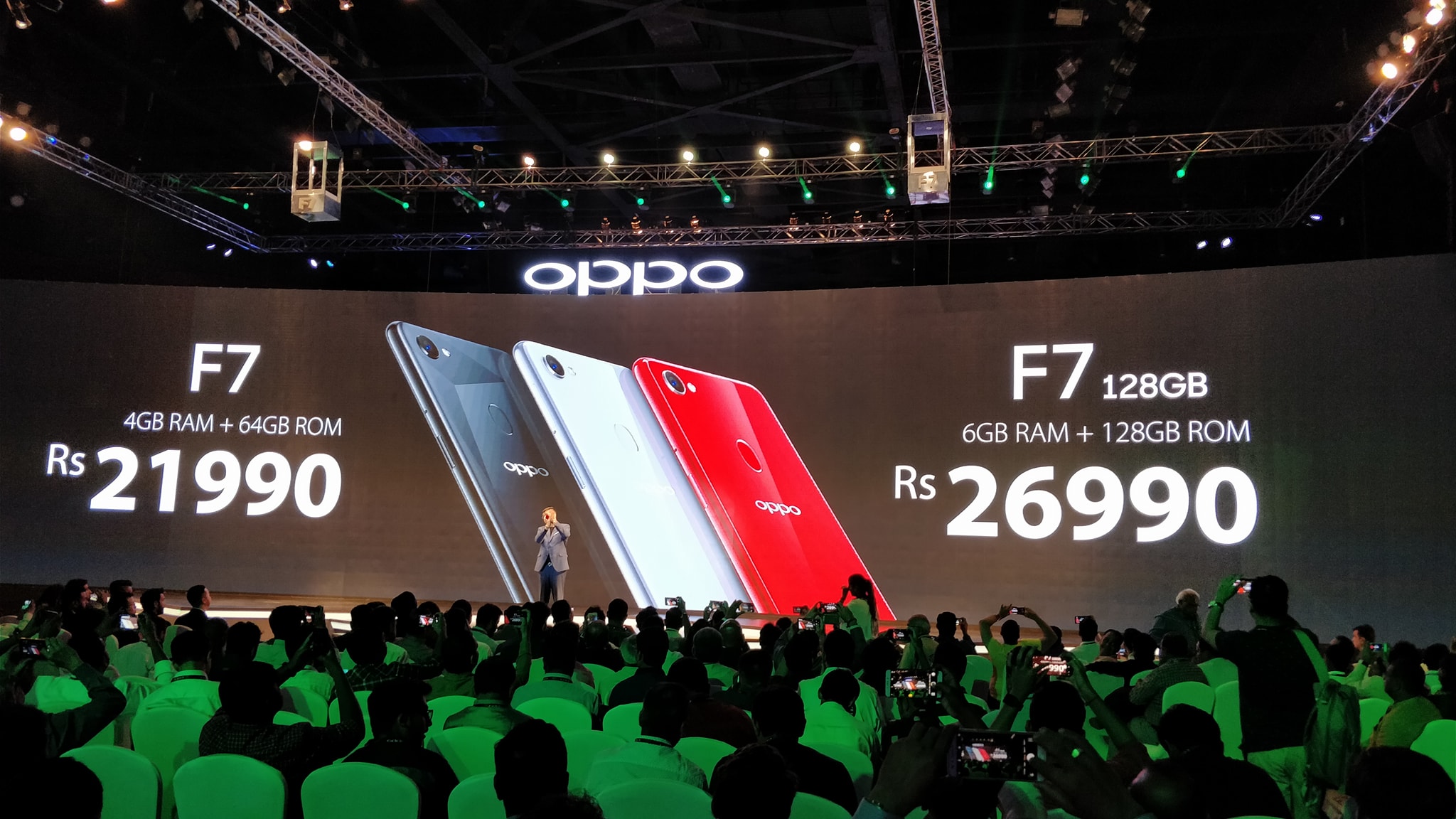Oppo F7 launched in India, not that different from Vivo V9
China's affection with Apple's "notch" continues

The Oppo F7 just launched in India, and even though the leaks and rumours gave most of it away, it’s interesting to see how the phone will fare against the Vivo V9. Vivo’s new flagship was launched just last week and shares Oppo’s unique selling proposition of specialising in selfies.
Looking at the features, the phone's seem at par with each other.
Just like the Vivo V9, the Oppo F7 also comes with a iPhone X-type notch and a bezel-less display with a 19:9 aspect ratio. The company calls it ‘super full-screen’.
Oppo F7 price
The Oppo F7 is available for Rs 21,990 and Rs 26,990 for the 4GB/64GB and 6GB/128GB variants, respectively. There's a flash sale on April 2nd, both online and offline where as the phones will officially go on sale on April 9th.
Oppo is offering 5 percent cashback for ICICI customers and Jio users can avail 120GB of data and Rs 1200 cashback over the period of 12 months.
A first for the company, they're offering a one-year, one-time deal on screen replacement for the Oppo F7.
The phone comes in three colors, namely, Diamond Black, Solar Red and Moonlight Silver.
Get daily insight, inspiration and deals in your inbox
Sign up for breaking news, reviews, opinion, top tech deals, and more.
The Vivo V9 costs Rs 22,990 in comparison with 4GB RAM and 64GB storage, while the Redmi Note 5 Pro costs Rs 13,999 and Rs 15,999, for its 4GB RAM and 6GB RAM variants respectively.
Oppo F7 specs and features
The Oppo F7 sports a 6.2-inch FHD+ screen which is only slightly smaller than Vivo’s 6.3-inch screen, giving it an 89.09% screen-to-body ratio.
The device runs on the octa-core MediaTek Helio P60 chipset, which has 4 Cortex A73 cores and four Cortex A53 cores, both clocking at around 2GHz. It’s paired with the Mali-G72MP3 GPU and 6GB of RAM.
The chipset was unveiled at the MWC 2018 and the manufacturer claims that the P60 has the ability to understand user behavior in order to adapt while making the phone smarter, which Oppo is calling 'AI battery management'.
The Vivo V9, running on the Snapdragon 626 has 8 ARM Cortex A53 cores that are clocked at 2.2 GHz, making its performance a little better, albeit slightly.
The Oppo phone's interface is the ColorOS 5.0 that includes features such as facial unlock, where as the Vivo V9 runs on the FunTouch OS that has facial recognition. Both of the custom UI's are layered on top of Android Oreo 8.1, so only experience will tell which one of the two is less clunky than the other.
Oppo’s new flagship sports a 25MP front camera and a 16MP rear camera equipped with 4K video recording and dual-toned LED flash.
Since Oppo prides itself as the manufacturer of ‘selfie-phones’, the F7 comes equipped with features such as AI selfie, AI Beauty Technology 2.0, and real-time HDR modes. The phone also has Cover Shots and AR Sticks, also present on the Vivo V9.
The only significant difference between Vivo's flagship and Oppo's new phone is that the Vivo V9 has a dual rear camera with 16MP and 5MP sensors. Even Xiaomi's Redmi Note 5 Pro has a dual rear camera set up with 12MP and 5MP sensors.
The phone’s battery is disappointing at 3400mAh considering that people prefer to have at least one whole day’s charge on their phone. Even Vivo lags in this department with a 3260mAh battery. Xiaomi's Redmi Note 5 Pro, on the other hand, has a 4000mAh battery that lasts at least 24 hours.
Wrap up
The Oppo launch seemed very AI heavy with every feature of the phone being linked back to it. It's all well and good to have AI where AI is relevant, but there's such a thing as over doing it.
It's specs and features aren't all that impressive and other phones under the Rs 20,000 price point have much more to offer to the consumer in terms of value-for-money.
Prabhjote Gill is the Senior Journalist at Business Insider India. She covering everything space, tech and defence at Business Insider India. She is also in-charge of allocating stories to junior writers.